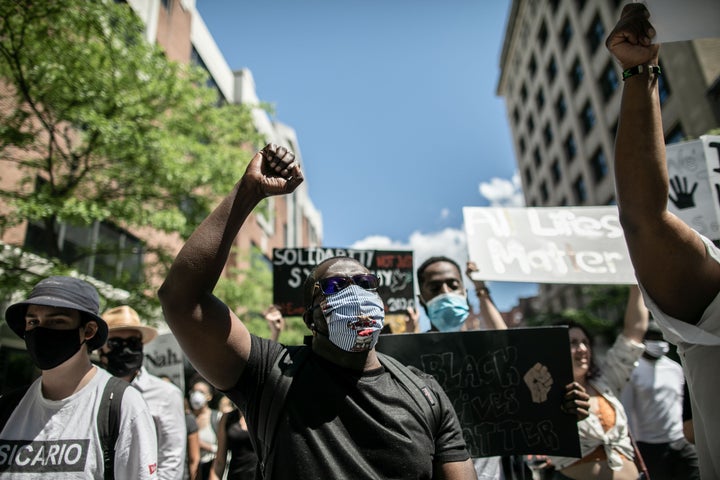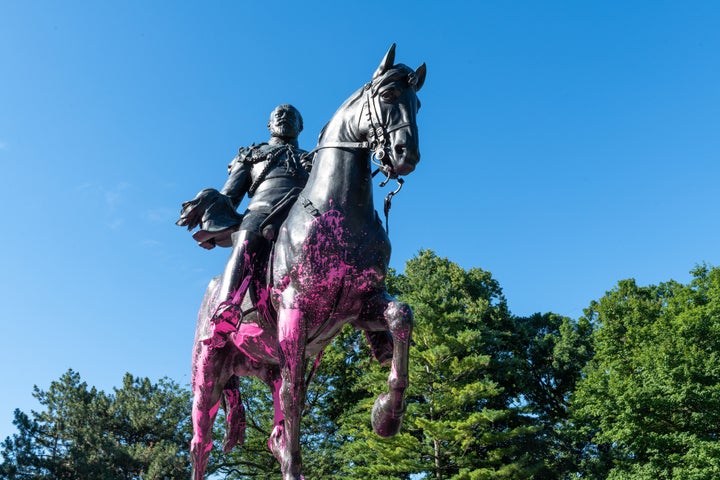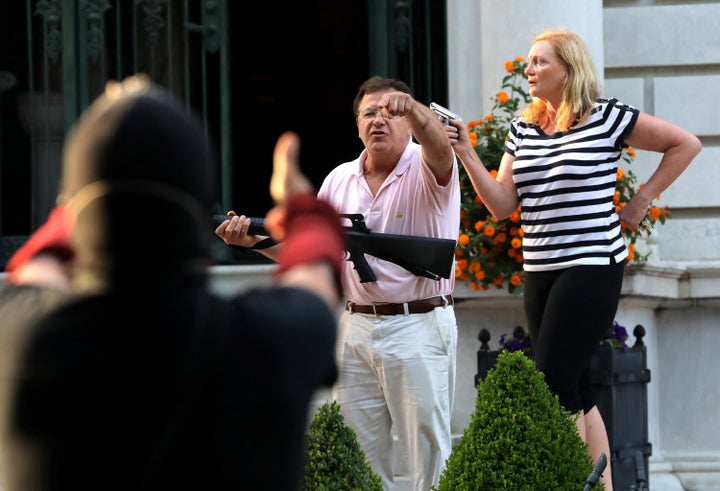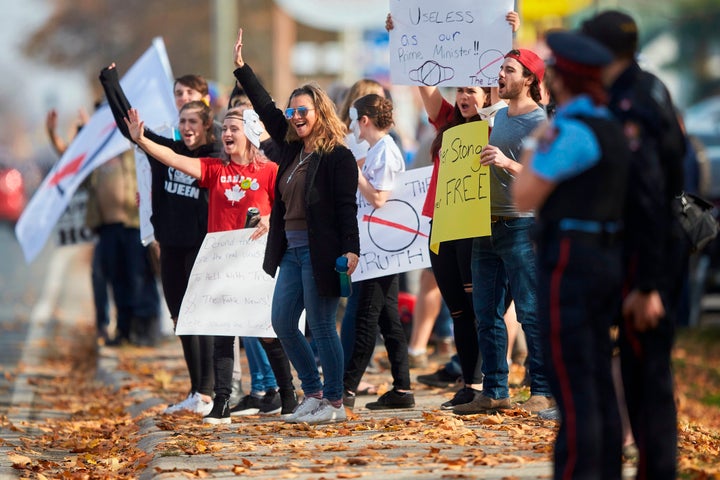
A good illustration of the concept of white privilege is how we talk about people who are angry at the status quo.
On Tuesday, a white Toronto restaurant owner named Adam Skelly decided he was angry about Ontario’s lockdown rules. Lots of small business owners were, as it meant a big hit to their financial wellbeing, during a time when many were already struggling.
But, rather than pivoting to a takeout or delivery model, or organizing to lobby the government to change its rules, Skelly decided the law was wrong and he was right, so he would just ignore the rules and open his Etobicoke restaurant for indoor dining anyway.
He expressed his intentions in advance on social media, proudly stating that his restaurant would be open for indoor dining “against provincial orders.”
Toronto Police showed up Tuesday but didn’t do anything, which they later said was a “mistake” to CBC News. The Medical Officer of Health ordered Skelly to close, but he refused, opening again the next day. Skelly sold out of food to lined-up crowds both days.
The fact that some people at the restaurant on Tuesday got tickets for illegal parking, while there were no consequences for illegally operating a restaurant during a pandemic, raised some eyebrows.
Skelly and his supporters also received what looked like an endorsement from someone affiliated with the city.
By contrast, in the days before the BBQ culture war started, the city shut down a community fridge that provided free food to area locals, and issued a warning letter to a Black man, Khaleel Seivwright, who built shelters for the homeless that aren’t permitted on city property.
Skelly was arrested two days later. His crowdsourced legal defence fund, which launched Wednesday evening, has raised more than $133,000 as of this post’s publish.
The police’s delayed and relatively gentle response, as well as the resulting crowd support and endorsement of Skelly’s actions strikes many people as an example of white privilege.
What is white privilege?
White privilege doesn’t mean white people get away with everything, or that white people can’t also suffer hardship. It means that white people don’t have their race used against them in everyday situations. They’re not assumed to be more violent or more dangerous based on the colour of their skin. Just by virtue of being white, they sometimes receive opportunities or benefits that aren’t offered to people of colour in the same position.
“White privilege is like an invisible weightless knapsack of special provisions, maps, passports, codebooks, visas, clothes, tools, and blank checks,” writes anti-racist educator Peggy McIntosh. It’s a set of unearned and sometimes unconscious privileges that many people of colour are not granted.
McIntosh lists some of the everyday ways white people benefit from the societal systems in place:
- I can turn on the television or open to the front page of the paper and see people of my race widely represented.
- When I am told about our national heritage or about civilization, I am shown that people of my colour made it what it is.
- I can take a job with an affirmative action employer without having co-workers on the job suspect that I got it because of my race.
- I can choose public accommodation without fearing that people of my race cannot get in or will be mistreated in the places I have chosen.
- I can be sure that if I need legal or medical help my race will not work against me.
In Skelly’s case, his status as a white man meant he was afforded the benefit of the doubt, the leeway to keep breaking the law, and the support to navigate the consequences.
What happens when people of colour protest the status quo?
There’s a vast gap between how we treat white people who break the law for a cause they believe in, and people of colour who do the same. It’s difficult to imagine a Black or brown restaurant owner treated with the patience and tolerance from the police and the city Skelly received.
Over the summer, after months of pandemic pressures that have disproportionately affected racialized people and after the deaths of George Floyd, Breonna Taylor, and the shooting of Jacob Blake, Black communities across the world protested against racism and police brutality. The status quo they were fighting was a very present reality where innocent and unarmed Black people regularly and disproportionately experience harassment, violence and often death at the hands of police officers, many of whom don’t face legal consequences.
The summer’s racial reckoning saw Black Lives Matter gain more mainstream acceptance than it had received before, as many big brands voiced their support for the organization, often in cringeworthy and performative ways. But many protesters didn’t receive the benefit of the doubt that Toronto police officers offered Skelly.

News outlets, city officials and political pundits smeared protesters by speaking with horror about looting and rioting, when in fact the overwhelming majority of protests were peaceful. The looting was equated with Black people being systematically killed for no reason.
More significantly, so many peaceful protesters were arrested, detained or otherwise treated like criminals that one of the biggest funds to receive charitable donations were organizations paying protesters’ bail.
In Toronto, three Black Lives Matter protesters were arrested in July for throwing paint on statues of John A. MacDonald, Egerton Ryerson and King Edward VII, which they paired with posters stating “Tear down monuments that represent slavery, colonialism and violence.” They were held in jail overnight and were all charged with three counts of mischief under $5,000 and conspiracy to commit a summary offence.
So, to recap: throw paint on a statue — if you’re Black, spend the night in jail. Purposely and publicly defy provincial by-laws meant to stop the spread of a pandemic — if you’re white, get fined, and keep on trucking for two days.

How the public response reveals white privilege
In the time between Skelly’s initial flouting of rules and his arrest, he refused to close his restaurant, and in fact announced he would open other locations in the coming days. You might think he’d be condemned by politicians and legislators, and some did, like Toronto mayor John Tory. But others, like Ontario MPP Randy Hillier, praised Skelly “for his courage and conviction.”
HillIer respected Skelly’s illegal maneuver: “I encourage others to do the same.”
We see examples of this kind of permissiveness granted to white people all the time: there’s Mark and Patricia McCloskey, the Missouri couple who aimed guns at people protesting the St. Louis mayor’s suggestion to release the names and addresses of residents who suggested defunding the police department. The McCloskeys became folk heroes to second amendment-obsessed conservatives, and were invited to speak at the Republican National Convention.
There’s Kyle Rittenhouse, another BLM counter-protester who’s accused of killing two people and injuring a third, who raised $2 million for bail and earned the support of former child actor Ricky Schroder.

By contrast, in the aftermath of any terrorist attacks, regardless of the identity of the attacker, there’s often a rush to demonize Islam — even though right-wing extremism is the cause of most terrorist attacks in the U.S.
On Thursday, Alexandre Bissonnette, a white Quebecer who killed six people in an attack on a Quebec City mosque in 2017, had his sentence reduced from life without parole for 40 years to 25 years, without much of a response from the public or the media. It’s true that we’re living through a chaotic news cycle without much time to process new information. But, what kind of response might that news have provoked if Bissonnette were Black or brown?
Last year, Mohamed Hersi tried to appeal his sentence after being charged for trying to join a Somali-based terrorist group. His appeal failed. Abdulrahman El Bahnasawy, a Canadian who was arrested for plotting terror attacks in New York, also lost his appeal.
Of course, Skelly isn’t violent. But neither was Breonna Taylor, or George Floyd, or the vast majority of people of colour who die at the hands of police officers. People shouldn’t have to be perfect and faultless to avoid being killed by police, but even the Black and Indigenous people who live up to those impossible standards are killed by police.
Bissonnette and accused murderer Rittenhouse have been granted the benefit of the doubt in a way that isn’t afforded to the people of colour performing civil disobedience.

How is white privilege related to anti-mask movements?
The anti-mask and anti-lockdown movements, to which Skelly is now a hero, tend to attract a pretty white crowd. There’s definitely some privilege at play, as Vox points out, in the fact that many of the people protesting are not the racialized and marginalized people who are experiencing the most devastating effects of COVID-19. Anti-mask protesters frequently use the language of oppression, which is unrelated to being asked to wear a mask to avoid spreading a deadly virus.
It’s not surprising, then, that the anti-mask movement — and Skelly’s stunt — are supported by right-wing politicians like Hillier and Maxime Bernier. Notorious white supremacist Paul Fromm is a supporter of Skelly’s restaurant, according to CityNews. Their report includes footage of Skelly referring to Fromm as “my friend,” but Skelly has not stated outright any support for white supremacy.
Adam Skelly broke the law in a way that endangers people. He was clear about his intentions, and seemed to revel in the attention and notoriety he gained. In return, he was treated with patience and caution by the police, and very quickly found a following.
The next time someone asks you what white privilege looks like, point them in his direction.
EDITOR’S NOTE: We believe that the HuffPost Canada community should be a safe and welcoming space for all users to engage in a meaningful dialogue, and our community policy is intended to preserve such an environment. Therefore, we have closed commenting on this story, due to overwhelming comments that violate that policy.